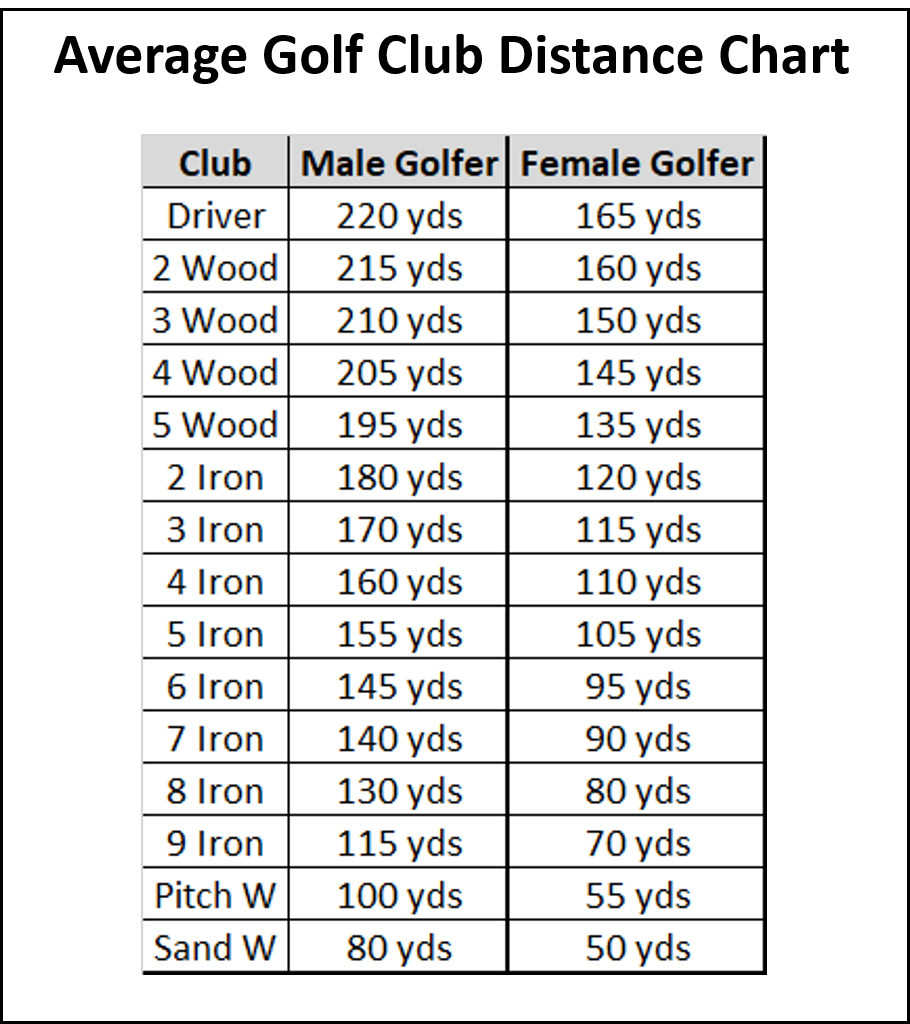
If you're a golfer, you probably have a golf club of some sort. It's a great way for you to improve your game by knowing how far you can hit a golf ball. The best tool to determine which club is right for you is the golf club distances calculator. A calculator can be found online and at your local driving practice. The calculator isn't a magic bullet that will make your game better. You have to apply it properly to get the most out of it.
The golf club distances calculator does not take into account the head angles of your clubs. Rather, it assumes you have decent contact with the ball. It will still show you the distances between your club and the ball for your swing speed.
It's not as easy as it may seem to determine the club average distance. This is because the distance that you hit the ball depends on many factors, such as the club you use and the weather conditions.

It's not hard to hit a golf club. It is difficult to hit a straight shot. Other variables include the speed of the wind and gradients in the course. Using a distance chart can help you to improve your game and ensure you're getting the most out of your tee time.
Although the golf club distance calculator won't show you exactly where you'll end up, it can help you determine your abilities. After all, you don't want to waste your time and energy trying to reach the pin with a club that's too far out.
You'll find that the best calculator to calculate distances between golf clubs is one that can be used on the green. These calculators can help you compare distances between different clubs and show you which one is the best for your job. Taking the time to learn the distances of all the clubs you own will help you to get closer to the hole in a fraction of the time.
For more detailed calculations, you'll have to look for a more comprehensive golf club distances calculator. Alternatively, you can try a simple comparison of the length of your shots. While this isn't as practical as a calculator it can be fun and useful.

One golf club distances calculator that you'll definitely want to take a look at is the FlightScope Mevo Portable Launch Monitor. This monitor measures your swing speed to calculate the best distances to hit your golf balls.
A distance chart can be an excellent tool for improving your game, regardless of whether you are a veteran or just starting to play. You can use the chart's most valuable features to see what your strengths and weaknesses are.
FAQ
What are the different types?
There are many different types of courses for golf. Some courses are specifically designed for beginners while others are more suited to the experienced player.
Some courses are situated near rivers, mountains, forests, or lakes. Others are in urban areas. You will find everything from public golf courses to private estates.
How does golf score?
The scorecard is divided into four different categories: Stroke Play, Par 3, Par 4, and Par 5. Each category can further be broken down into strokes. To attain par, a golfer must play 18 holes (Par72).
The lowest score wins.
What happens after a round of golf is over?
The round ends with the lowest score. If two players are tied for first, they both win.
If there are more than three players who tie for the first place after 18 holes they will share the money.
If there are two or more players who remain tied after 18 holes the tournament committee determines who will receive the prize money.
Statistics
- They do this by means of assessing and rating courses according to the average good score of a "bogey golfer," a player with a handicap of around 20. (en.wikipedia.org)
- Professional golfers typically make between 60% and 70% of greens in regulation. (en.wikipedia.org)
- They do this by means of assessing and rating courses according to the average good score of a "bogey golfer," a player with a handicap of around 20. (en.wikipedia.org)
- In the United States, women made up 25 percent of golfers in 2021, which was up from 19 percent in 2011, and junior female golfers account for 35 percent or 1.1 million golfers.[50] (en.wikipedia.org)
External Links
How To
How to Hit The Golf Ball Straight
One of the most discussed topics in history has been how to hit the ball straight. There have been many options to achieve the desired result. You can hit the ball with a ball, throw the ball at the target, and even use your naked hands to hit the ball.
To hit the ball straight, you should first understand how to hit the ball. You will then need to be able to choose the best tool for your job. Finally, you must practice swinging the club correctly. You'll soon be able use these steps to hit the ball straight when you master them.
Keep in mind that your goal is to hit the ball straight when you practice. It means that you need to hit the ball exactly where it is supposed to be. The ball will veer off the course if it's hit too high, low, or too high.
Follow this simple guideline to hit the ball hard.
-
Grab the club tightly. Your grip should be comfortable and firm enough that it holds the club securely.
-
Set up your stance. Your feet should form an L shape when you are standing over the ball. Your body weight should be evenly distributed between your legs.
-
Move the club around as fast and as quickly as possible. When the clubhead reaches it's highest point, stop and then slowly lower it again. This motion should be repeated until you complete one revolution.
-
Swing only through the ball's center. The club should not be moved to either direction.
-
Keep the clubface in line with the target line. Concentrate on keeping your clubface parallel to ground.
-
Be sure to make solid contact with your ball. Try not to strike it too softly.
-
Your sweet spot should be somewhere in the middle of the ball. This will ensure that the ball is true to flight.
-
If you are using your driver, aim towards the middle of the fairway. If you are using long irons, aim for the rough.
-
Swing at a small target, such as a brick wall and a tree trunk to practice your technique.
-
You will begin to notice improvements after a few months of consistent practice.
-
Make the most of your new skills!